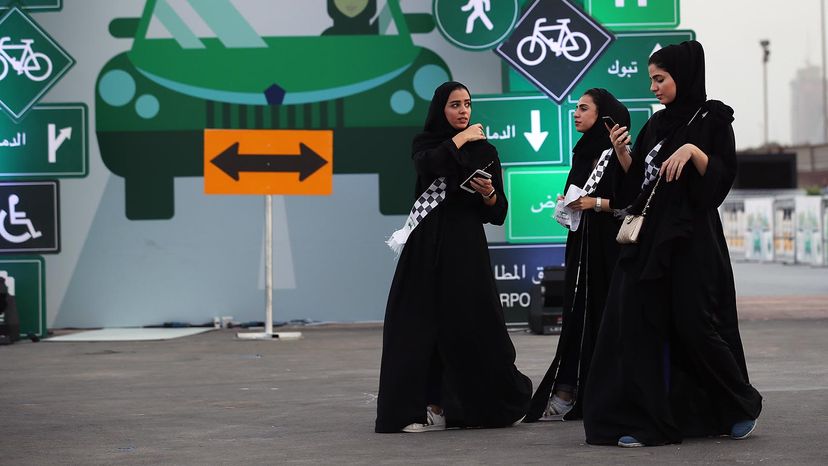Veiling Vocabulary

The history of veiling is so long that it's impossible to know when or where it started. Though Muslim women are associated with veiling, the practice began before the rise of Islam. There is record of veiling in Assyrian society, as far back as 1200 B.C.E. It's likely that the veil started as a sign of privilege. Upper-class women who didn't have to work outside the home wore veils to distinguish themselves from enslaved people, peasants and other women who were deemed to be of lower status [source: Amer].
Before we go any further, though, it's necessary to stop and clarify some vocabulary. Burqas, primarily worn in Afghanistan and Pakistan, are full-body cloaks that thoroughly cover the face of the wearer and may only have a mesh screen for the eyes. There are also full-body cloaks that don't obscure the face, such as the abaya in Saudi Arabia and the chador in Iran. Women in Iran have been required to wear headscarves in public since the early 1980s.
Advertisement
Hijab is a general word that encompasses all sorts of head coverings and scarves. These scarves don't necessarily have full gown accompaniments, but they might. Styles of head coverings include the shayla, al-amira and khimar. A niqab is a face veil that can be worn with a hijab so that everything but the eyes remains veiled. The two terms at the center of many debates about the veil, therefore, are burqa and niqab, as these are the coverings that obscure the face.
Though hijab refers to the headscarves that Muslim women wear, the word also refers to the reason why many women wear the scarves in the first place. The Arabic word hijab loosely translates to the English words "cover" or "veil." But within the Islamic religion, hijab also refers to principles of modesty and behavior that adherents believe the Prophet Muhammad wishes them to live by. Calls for modesty appear in the Quran and in hadith (recorded sayings and customs of Muhammad), but scholars are divided on what exactly the verses mean.